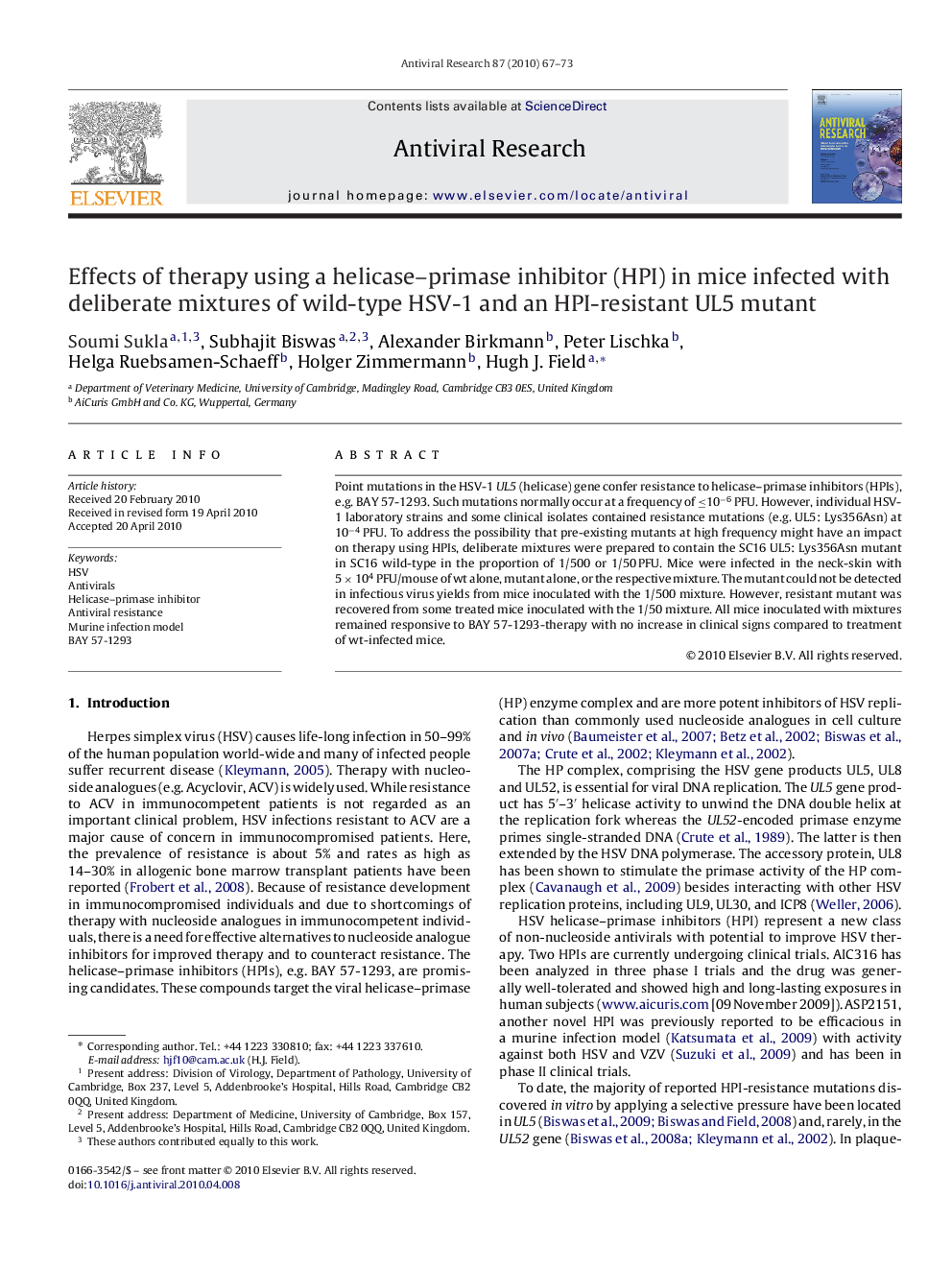| Article ID | Journal | Published Year | Pages | File Type |
|---|---|---|---|---|
| 2510727 | Antiviral Research | 2010 | 7 Pages |
Point mutations in the HSV-1 UL5 (helicase) gene confer resistance to helicase–primase inhibitors (HPIs), e.g. BAY 57-1293. Such mutations normally occur at a frequency of ≤10−6 PFU. However, individual HSV-1 laboratory strains and some clinical isolates contained resistance mutations (e.g. UL5: Lys356Asn) at 10−4 PFU. To address the possibility that pre-existing mutants at high frequency might have an impact on therapy using HPIs, deliberate mixtures were prepared to contain the SC16 UL5: Lys356Asn mutant in SC16 wild-type in the proportion of 1/500 or 1/50 PFU. Mice were infected in the neck-skin with 5 × 104 PFU/mouse of wt alone, mutant alone, or the respective mixture. The mutant could not be detected in infectious virus yields from mice inoculated with the 1/500 mixture. However, resistant mutant was recovered from some treated mice inoculated with the 1/50 mixture. All mice inoculated with mixtures remained responsive to BAY 57-1293-therapy with no increase in clinical signs compared to treatment of wt-infected mice.
